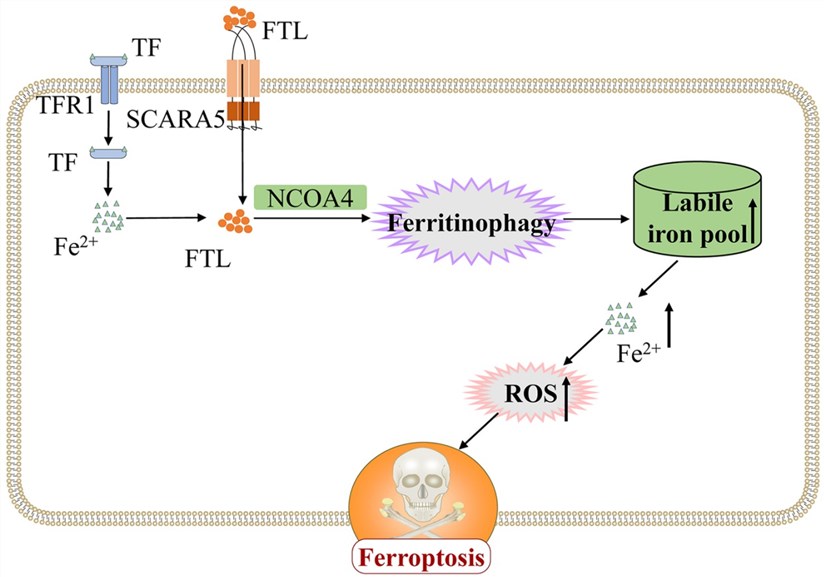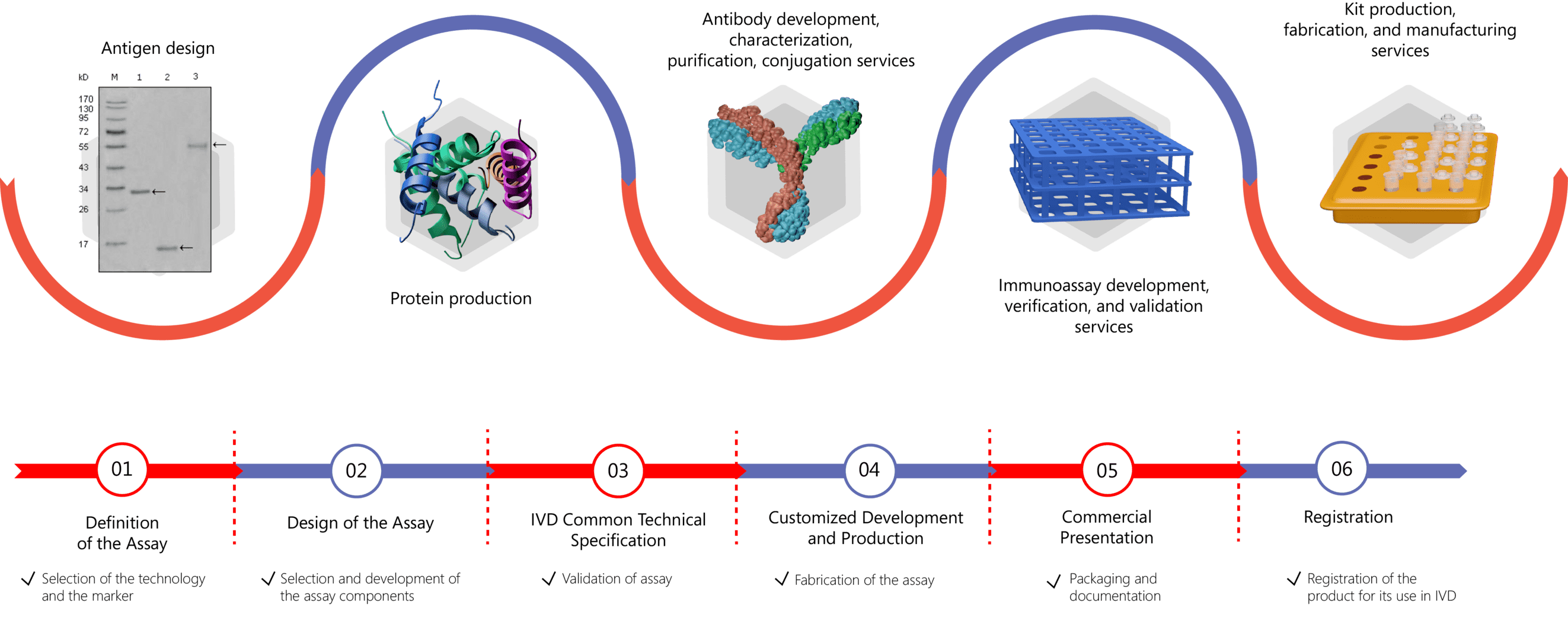Creative Biolabs is one of the leading custom antibody generation and development providers. We specialize in the generation of antibodies against a wide range of targets for R&D, diagnostic, and therapeutic applications. Currently, we have launched a series of in vitro diagnostic (IVD) antibody development services targeting numerous diagnostic biomarkers of human diseases. Here, we introduce the potential of ferritin light chain (FTL) as a potential biomarker for cancer diagnosis.
Introduction to FTL
Ferritin is a major iron storage protein that is essential for iron homeostasis. It is composed of two functionally distinct subunits, the ferritin light chain (FTL, L-subunit) and the ferritin heavy chain (FTH, H-subunit). FTH has ferroxidase activity and can oxidize ferrous iron into ferric iron, whereas FTL lacks enzymatic activity and facilities stable iron storage in the ferritin core. FTL gene, located in chromosome 19q13, contains four exons and encodes the light subunit of the ferritin protein. Mutations in the 5’UTR region of the FTL gene can cause hereditary hyperferritinemia-cataract syndrome (HHCS) which is an autosomal dominant disorder characterized by elevated levels of serum ferritin in the absence of iron overload. Also, ferritin has currently considered an indicator of iron status and is used to monitor the presence of malignant disease. Studies have found that the expression of FTL in the serum of patients with various malignant tumors are abnormal, indicating that the expression of FTL is associated with cancer. In colon cancer, testicular seminoma, and breast cancer, the expression of FTL is increased, while in liver cancer, the expression of L-ferritin is decreased.
FTL as A Diagnostic Biomarker for Cancers
Many studies have reported the potential of FTL as a biomarker for cancer diagnosis. A research team investigated the expression of ferritin in head and neck squamous cell carcinoma (HNSCC) patients using the chemiluminescent immunoassay method and found that expression levels of ferritin heavy chain (FTH) and FTL were higher in tumor tissues compared with normal tissues. They concluded that serum ferritin may be a potential biomarker for predicting cervical lymph node metastasis in patients with HNSCC. Another study reported the validation of FTL as a breast tumor prognostic biomarker in node-negative breast cancer patients. Liu et al. (2020) evaluated the expression level of FTL in glioma using immunohistochemistry (IHC) and western blot and the results suggested hypoxia-inducible FTL was a regulator of epithelial-mesenchymal transition (EMT) and acted not only as a prognostic marker but also a novel biomarker of response to chemotherapy in glioma.
 Fig.1 SCARA5 binds to FTL to induce ferroptosis in ESCC cells.2
Fig.1 SCARA5 binds to FTL to induce ferroptosis in ESCC cells.2
IVD Antibody & Immunoassay Development Services Provided by Creative Biolabs
To render more precise antibody-based diagnostic tools and assist clinicians in the diagnosis, prognosis, and staging of different diseases and infections, Creative Biolabs provides customized IVD antibody and immunoassay development services to generate high-quality IVD kits. We offer services covering the whole IVD kit development process, including antibody development, antibody conjugation, antibody pairing, and diagnostic immunoassay development services. For more detailed information about what we offer for each stage of the development process, please click the links below:
- IVD Antibody Development
- Antibody Pair Development
- Antibody& Protein Conjugation
- IVD Immunoassay Development

Please feel free to contact us for more information and discuss your project needs.
References
- Liu, J., (2020). “Hypoxia induced ferritin light chain (FTL) promoted epithelial mesenchymal transition and chemoresistance of glioma.” Journal of Experimental & Clinical Cancer Research, 39(1), 1-17. Distributed under Open Access license CC BY 4.0, mentioned by summarizing some parts of the article.
- Liu, Yanqun, et al. "SCARA5 induced ferroptosis to effect ESCC proliferation and metastasis by combining with Ferritin light chain." BMC cancer 22.1 (2022): 1304. Distributed under Open Access license CC BY 4.0, without modification.
For Research Use Only.

